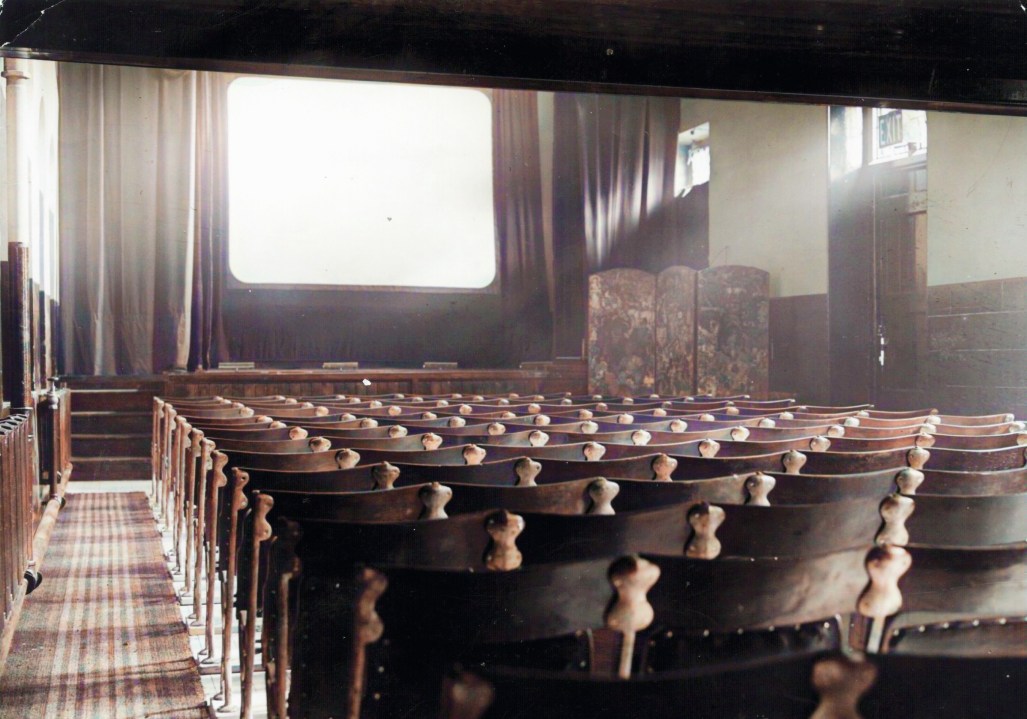As we come to the end of another troubling year, suddenly the news from the film front isn’t all doom and gloom. Cinema audiences may be in steep decline, but there’s one kind doing much better than any other: the family-friendly film. Fans of gratuitous nudity, extreme violence and Gregg Wallace are going to hate me for pointing this out; but stay with me. The facts back me up.
Universal’s latest fun-for-all-the-family musical Wicked (PG) survived iffy reviews to set a record for the biggest opening weekend for a Broadway adaptation, with a $114 million debut in the USA. Disney’s colourful Moana 2 (PG) enjoyed a record-breaking Thanksgiving weekend, grossing $221 million.
The highest grossing film in North America this year has been another Disney sequel, Inside Out 2. Other massive hits have been Despicable Me 4 and Kung Fu Panda 4.
Even family films are not immune to Hollywood’s increasingly suicidal infatuation with wokeness
The more eagle-eyed among you may already have noticed that these hits are mostly sequels. It’s a legitimate concern that good original films for all the family are scarce. And the success this year of all those sequels is not altogether welcome proof that children and parents tend to go for familiar brands.
But sequels aren’t always bad. I was not alone in finding Paddington 2 (2017) more magical than its predecessor, and the most entertaining film of its year. I would rank Hugh Grant’s hammy villain as the outstanding comedy performance of the century so far. I’m still wondering why he didn’t pick up any awards. I suppose it’s possible that a few people thought he was playing himself.
The home-grown P2’s artistic success was, I’m happy to report, mirrored in its commercial achievement. Made for around $40 million, it grossed $284 million worldwide.
I would also argue that Pixar’s mostly excellent, ground-breaking Toy Story series hit its peak at episodes two (1999) and three (2010). Number two grossed a stratospheric $511 million.
Films with the number three in the title don’t normally inspire confidence. During sleepless nights, I still shudder at the awful memory of Spider Man 3, Rush Hour 3 and Shrek the Third. Toy Story 3 bucked that trend, and it’s my favourite of the whole franchise – further evidence that there’s no need to dismiss all family films as kids’ stuff.
In many ways, it was the most grown-up picture of its year. There was menace, suspense and surprisingly profound emotion, especially towards the end as the toys found themselves on a conveyor belt heading for destruction and they joined hands in what they thought would be their last moments.
The third Toy Story dared to examine the very grown-up but also quite disturbing idea that someday even children’s lives will have run their course. The film was, at heart, about letting go and facing death with dignity. The fact that it could cover such a weighty topic, and do so with sympathy and humour, was no small miracle.
Pixar’s creative bravery helped make Toy Story 3 a bigger success commercially than either of its predecessors. It grossed over $1 billion worldwide, becoming the highest-grossing animated film of all time – until Frozen came along in 2013 and made an even bigger profit.
The lesson of 2024 is that, even though cinema audiences are in decline generally, family-friendly films are a triumphant exception. It’s easy to understand why. The main reason people still go to the cinema is for a communal experience. Grown-ups who don’t understand the success of Frozen or its inferior but even more profitable successor, Frozen 2 (2019), might have their horizons broadened if they witnessed the enjoyment those films give young girls.
The first Frozen struck even old, male me as brave and subversive in the way it turned the handsome Prince Hans into a villain, instead of (as you might expect in a Disney movie) the princesses into love objects. It managed to incorporate feminist elements without appearing to hector; indeed, it seemed merely to correct a sexist bias that had gone on for much too long. The clincher is that little girls loved it.
Regrettably, though, even family films are not immune to Hollywood’s increasingly suicidal infatuation with wokeness. The most irritating aspect of Frozen 2 was its relentlessly far-left attitude towards institutionalised racism, whiteness and climate change (unsurprisingly, it’s against them), and its brainless advocacy of virtue-signalling and massive reparations by modern empires to their former territories. The reassuring adage ‘go woke, go broke’ did not, sadly, apply to Frozen 2.
Remarkably, the hard-line feminist approach to patriarchy exhibited by Barbie (2023) didn’t go down badly either – possibly because its target audience was overwhelmed by its feminine pinkness and Ryan Gosling’s pecs, and were reassured by its all-too-convincing pretence that it didn’t have a single brain-cell to rub together.
Two of the most expensive family flops, Disney’s unexciting Strange World (2022) and Pixar’s unimaginative Toy Story spinoff Lightyear (2022), ran into heavy criticism from the public for trying to proselytise in favour of gay sex to small children. Both movies received praise from critics for ‘timely social messaging’. Both died horrible deaths at the box office, and couldn’t get exhibited in less ‘enlightened’ countries. I’m broadly sympathetic to its anti-homophobic message, but let’s hope Hollywood learns the lesson that social engineering needs to be a bit more sensibly nuanced and less didactic than this.
So as we enter 2025, let’s hope that more critics abandon their snobbery towards family films. E.T. (1982) and Up (2009) should move you, whatever age you are. Give them a chance, and Star Wars (1977), The Lion King (2019) and The Incredibles (2004) will amuse you, whether you’re six or 60. Shrek (2001) and Enchanted (2007) are sharp, witty satires on Disneyfication, but also acknowledge the best aspects of Disney: especially unpretentiousness, good humour and generosity of spirit.
We could do with many more films as good – and as charming – as these. Let’s just hope that not all of them are sequels.








Comments